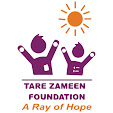Menstrual Hygiene Management is a major health issue affecting women and girls of reproductive age globally. According to a report by UNICEF, 52% of the female population is of reproductive age at any given time in the world. Going with the basic annotation of menstrual health and hygiene, it is about access to menstrual hygiene products to absorb or correct menstrual blood, privacy to change the materials, and access to facilities to dispose of used menstrual management materials.
On 28th May of every year is observed as Menstrual Hygiene Day to create awareness about the use of sanitary napkins. In India, 62% of women in the age group of 15-24 years still rely on cloth and some on leaves. For the overall data, only 56.67% of women use sanitary napkins among all age groups and menstruating women according to the survey done by the National Family Health Survey, 2015-16. It is startling that when girls hit puberty, 1 out of 5 girls starts missing school, leading to her eventually dropping out. In India, under normal functioning days, sanitary napkins are not included under essential items under the taxation category. However, during this period of lockdown after Smriti Z Irani’s tweet on 29th March 2020; Home Secretory included it in the list of the essential items. A lot of girls in remote areas of the country who were previously dependent on government schools for providing free napkins now left in the darkness of lockdown. “The COVID-19 pandemic has exacerbated women’s deprivation of menstrual hygiene products, amongst several other basic needs. The lockdown has resulted in restricted access, mobility, and freedom for women and girls making it even more difficult for them to manage their monthly cycle in a dignified, healthy way” quoting Poonam Muttreja, Executive Director of Population Foundation of India describing the crisis during the lockdown.
In June 2010, the Government of India proposed a new scheme towards menstrual hygiene by a provision of subsidized sanitary napkins to rural adolescent girls but there are various problems like consciousness, sustainability, and quality of napkins, frequent supply, privacy, water supply, disposal of pads, reproductive health education and family support which needs equal attention for the promotion of menstrual hygiene. Menstrual hygiene still is a huge problem in India because people are not well educated about it and have a stigma about it and think about menstruation as a taboo. Women themselves to date feel hesitant to buy menstrual hygiene goods from shops in the presence of male customers. This negative aura of menstruation can only be shattered through the education of both boys and girls at primary levels. This topic is not only a matter of hygiene and health but also about social and human rights values attached to it.






0 Comments